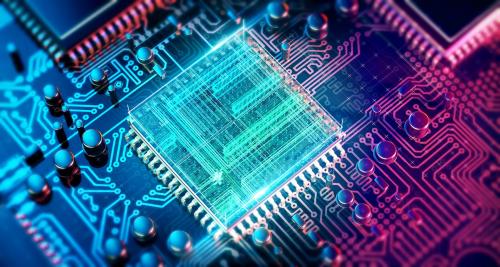In February, President Obama signed into law a reauthorization of the Federal Aviation Administration (FAA) that requires the agency — on a fairly rapid schedule — to write rules opening U.S. airspace to unmanned aerial vehicles. This puts the FAA at the center of a potentially dramatic set of policy changes that stand to usher in a long list of direct and indirect benefits. But the FAA is not a privacy agency. And although real privacy concerns have arisen about these aircraft, asking the agency to take on the role of privacy czar for unmanned aerial vehicles (UAVs) would be a mistake.
UAVs, commonly known as drones, offer real promise for an array of domestic applications. In an era of ever-tighter budgets, they could dramatically reduce the cost to law enforcement agencies and private companies involved in gathering vital — in some cases, lifesaving — information. UAV research and innovation are driving the creation of companies and the jobs that accompany them. Many of these innovations are pushing the frontiers of robotics in ways that will help U.S. competitiveness in this industry and beyond.
But like any new technology, UAVs can bring challenges as well. The FAA has been charged with figuring out, by the middle of next month, how to expedite the licensing of certain government drones. It is also supposed to develop, by later this year, a comprehensive plan for the integration of private UAVs into U.S. airspace by late 2015.
Simply put, the FAA has a lot on its plate. There are the basic regulatory questions: How do you put large numbers of unmanned systems in the air without endangering commercial and general aviation? Who can fly a UAV — not to mention, of what size, how high and how far — without its posing a threat? What rules should apply, and how should they be enforced?
Significant concerns have also arisen about the possibility that law enforcement agencies, companies and private individuals might exploit UAVs to acquire invasive imagery. The current legal framework with respect to observations from above by government is not particularly protective of privacy.
Two of the most relevant Supreme Court cases, California v. Ciraolo in 1986 and Florida v. Riley in 1989, addressed law enforcement’s use of manned aircraft to perform surveillance of a suspect’s property. In both cases, the court held that observations made from “public navigable airspace” in the absence of a warrant did not violate the Fourth Amendment.
These precedents suggest, in a world in which UAVs will be inexpensive and plentiful, that government operators might have broad legal latitude to use them for surveillance. Nongovernment operators may have even fewer constraints regarding surveillance. And today’s cameras are far more capable than those of the 1980s and can acquire stunning high-resolution imagery from hundreds of feet away — imagery that can be processed using ever more capable computers.
Against this backdrop, a coalition of civil liberties groups has petitioned the FAA “to conduct a rulemaking to address the threat to privacy and civil liberties that will result from the deployment of aerial drones within [the] United States.” Another civil liberties group suggested that “on its own authority, the FAA can — and should — investigate the possible negative effects of flying drones in U.S. airspace” to “ferret out potential privacy problems and find solutions.” On Thursday, the co-chairs of the Congressional Bipartisan Privacy Caucus wrote to the FAA “to express our concerns about the law’s potential privacy implications and to request information about how the FAA is addressing these important matters.” The potential for abuses on the part of government actors, corporations and even individuals is real — and warrants serious consideration before some set of incidents poisons public attitudes against a field that promises great benefits.
The FAA’s mission, as stated on its Web site, is to “provide the safest, most efficient aerospace system in the world.” It is hard to overstate the challenges the agency will face in safely providing for the operation of what may soon be tens of thousands of UAVs, operated by tens of thousands of people from unconventional flight locations — while it continues to manage and modernize the existing framework for traditional manned aircraft. Meanwhile, privacy is a field in which virtually every principle is contested and public expectations are shifting quickly.
The privacy issues associated with UAVs are part of a larger set of questions unrelated to aviation: how to protect individuals in the context of the rapid proliferation of information-gathering technologies to governments, companies and our neighbors. In some respects, UAVs are not so different from cellphone cameras, networked computers and other technologies that reduce the space for keeping personal affairs from view.
Expecting the FAA to broaden its already unenviable task, under tight deadline pressure, to include this hotly disputed field that lies far from its core competency is a recipe for bad and technologically uneven outcomes that will satisfy no one.



Commentary
Op-edRegulating Domestic Drones on a Deadline
April 20, 2012